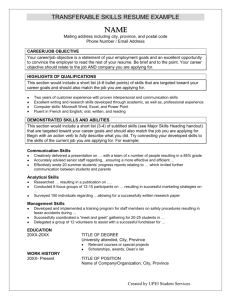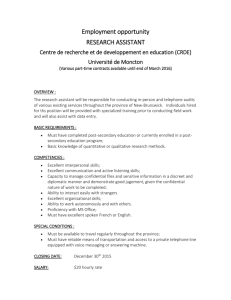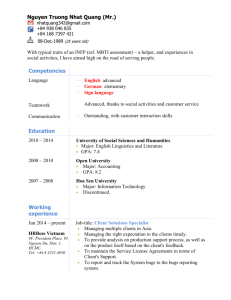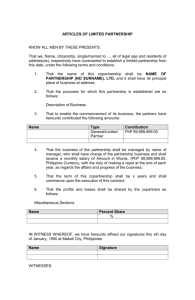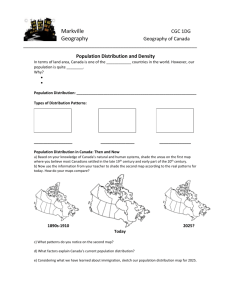File
advertisement
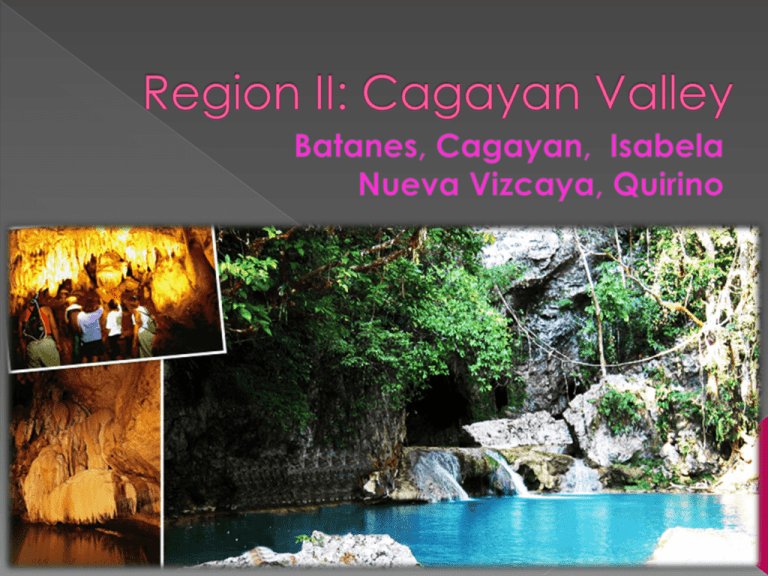
is the vast mass of land in the northeastern region of Luzon. It is bounded to the west by the Cordillera Mountain Range, to the east by the Sierra Madre Mountain Range, and bounded by the Babuyan Island, where the waters of the Pacific Ocean in the east and the South China Sea in the west meet. It is composed of five provinces, namely: Batanes, Cagayan, Isabela, Nueva Vizcaya, and Quirino. It has four cities: industrial center Cauayan City, its regional center Tuguegarao, its commercial center Santiago City. Most of the region lies in a large valley in northeastern Luzon, between the Cordilleras and the Sierra Madre mountain ranges. Cagayan River, the country's longest river runs through its center and flows out to Luzon Strait in the north, in the town of Aparri, Cagayan. The Babuyan and Batanes island groups that lie in the Luzon Strait also belong to the region. Cagayan's area is 9,003 km². Its population was 952,000 (by the 2000 census) in 29 towns, of which Tuguegarao is the capital. the Cagayan Valley has been inhabited for half a million years, though no human remains of any such antiquity have yet appeared. The earliest inhabitants are the Agta, or Atta, food-gatherers who roam the forests without fixed abodes. A large tract of land has lately been returned to them. The bulk of the population are of Malay origin. For centuries before the coming of the Spanish, the inhabitants traded with Indians, Malays, Chinese, and Japanese. In the nineteenth century the prosperity found in tobacco cultivation caused many Ilocanos to settle here. Tobacco is still a major factor in the economy of Cagayan, though a special economic zone and free port has been created to strengthen and diversify the provincial economy. Cagayan has much to offer visitors: beaches, swimming, snorkeling, skindiving, fishing in the river and the sea, hiking in primeval forest, mountainclimbing, archaeological sites, the remarkable collection of the provincial museum, the Callao Caves, and many fine churches. Even here there are fortifications built to protect the inhabitants from raids by the Mara. Batanes, Cagayan, Isabela, Nueva Vizcaya, and Quirino. The island-province of Batanes was created by a series of volcanic activities and other geologic forces millions of years ago. The province is home to the famous Ivatans who are nationally acclaimed as the “True Insulares.” Taiwan as well as Spaniards who came to the island in the 16th century. Being an insular people, the Ivatans have kept the purity of their gene pool through time. Batanes lies at the northernmost tip of the Philippines, where the Pacific Ocean merges with the South China Sea. It is composed of three major/largest islands, namely: Batan which contains the capital town of Basco, Sabtang, and Itbayat. Batanes has been identified as the country’s potential gateway to East China. Its total land area is 209 sq.km which makes it the smallest province in the country. "The island-province is strewn on a 4,500 square kilometer expanse of territorial waters, the Luzon Strait and Balintang Channel, where the Pacific Ocean merges with the South China Sea, a sealane between the Philippines and the southern parts ofJapan, China, Hongkong, and Taiwan. It is bounded on the north by the Bashi Channel, on the east by the Pacific Ocean, on the west by the South China Sea, and on the south by the Balintang Channel. It is characterized by gently rolling hills, cliffs, and black and white sand beaches. They say they have the rarest corals in the world, but advise against swimming in the sea--it's "too frisky." Some islands are difficult to reach even by boat. The mother tongue of Batanes is Ivatan, spoken by 93.94 percent of all households. The Ilocano dialect is also spoken while Filipino and English are generally spoken and understood. Major Industries The province has a total agricultural land area of 5,438 hectares and has a wide area open for agricultural expansion. Due to its terrain, it is a major livestock producer with cattle as its main stock. Carabaos and goats are also popularly raised. Another major industry is fishing which reaches its peak during the summer months, from March to June, when the seawater is relatively calm. *Ivana *Basco (Capital) *Uyugan *Sabtang *Mahatao *Itbayat. The Ivatans The friendly Ivatans of Batanes, considered as “True Insulares,” can be found greeting visitors and tourists walking along the streets of the island-province. Known as the spelunker’s, trekker’s, and game fisher’s paradise rolled into one, Cagayan provides a neverending adventure with ecotourism in the forefront of its offering. Both foreign and local tourists continue to explore its caves, engage in game fishing expeditions, trek its mighty mountains and retreat to its centuriesold churches. Present day chroniclers say that the name was derived from the word “tagay,” a kind of plant that grows abundantly in the northern part of the province. Thus, “Catagayan” which means a place where the tagay grows abundantly was shortened to “Cagayan,” the present name of the province. The province is bounded by the Pacific Ocean on the east, on the south is Isabela province, on the west is the Cordillera Mountain, and on the north by the Balintang Channel and the Babuyan Group of Islands. The province comprises an aggregate land area of 9,002.70 square kilometers, which constitutes three percent of the total land area of the country, making it the second largest province in the region. Tuguegarao City Symbolism: TOP STRIPE - SKY BLUE - (The azure sky) which stands for justice, honor , and nobility of the people, their sincerity and their traditionally peaceful ways; MIDDLE STRIPE - GOLD - (Color of the bright sun) which symbolizes the wealth of the Province; LOWER STRIPE - GREEN - (the verdant mountains and plains) which depicts the fertility of the soil; it also inspires hope among the people; Languages in the province are Ybanag, Ytawit, Malaweg, and Ilocano. Other ethnic groups that migrated to the province speak their own dialects. People in places where literacy is high speak and understand English and Pilipino. Agricultural products are rice, corn, peanut, beans, and fruits. Livestock products include cattle, hogs, carabaos, and poultry. Fishing various species of fish from the coastal towns is also undertaken. Woodcraft furniture made of hardwood, rattan, bamboo, and other indigenous materials are also available in the province. Isabela, the biggest province in the Cagayan Valley Region, is now one of the premier provinces of the north. It has been dubbed as the “Rice Granary of the North” having been adjudged as the Most Outstanding Province in Food Security in the Gawad Sapat Ani Awards 2000 conducted by the Department of Agriculture. It is also home to the famous Northern Sierra Madre Natural Park, a protected seascape and landscape of exceptional biodiversity. Santiago City, the commercial center of Region 2, has been declared an independentcomponent city through a plebiscite on July 3, 1994 under Republic Act 7720. Cauayan City, the trading center in Isabela, is also a component city ratified in a majority vote on March 30, 2001. Proceeding southward (or in alphabetical order, or upriver) through Region II we come to the Province of Isabela, created in 1856 and named for Isabela II, then the Queen of Spain. Isabela is the biggest (10,665 sq.km.) and most populous (1,277,000) province in the Cagayan Valley comprises one city Santiago, and thirtysix towns, of which Ilagan is the capital The province is divided into three physiographic areas. The eastern area, straddled by the Sierra Madre Mountain Range, is rugged and thickly forested. A substantial portion is uncharted and the unexplored hinterlands are home to a rich variety of flora and fauna while others are government reservations. The western area is a sprawling fertile valley hemmed by the Central Cordillera and is criss-crossed by the mighty Cagayan, Siffu, and Magat Rivers. Its mountains rise to a peak of about 8,000 feet and is home to one of the world’s largest remaining low-altitude rainforests with numerous unknown endemic species of flora and fauna and exceptional biological diversity. The area is popularly known as the Northern Sierra Madre Natural Park. Isabela comprises an aggregate land area of 10,665 square kilometers, representing almost 40 percent of the regional territory. It is the largest province in the region and the second largest province in the country in terms of land area. Cauayan City Santiago City The major dialect in Isabela is Ilocano followed by Ibanag, Yogad, and Gaddang. People, especially in the capital and commercial centers, speak and understand English and Pilipino. Agriculture is the major industry of the people of Isabela. Farming is highly mechanized as most of the agricultural lands are irrigated. With the presence of the Isabela StateUniversity, joint ventures and other foreign assisted projects are viable while the Magat Dam Tourism Complex contributes to the high productivity in agriculture. Isabela is acknowledged as the hub of trade and commercial activities in the region due to its central location in the region. Furniture making using narra and other indigenous forest materials/products like Gmelina continue to exist. Potential investments are in fisheries and tourism. The reservoir of the Magat Dam is utilized for fishcage operations, particularly tilapia production. Tourism is relatively a new industry being developed in the province especially in the coastal areas. Support services and accommodation facilities are likewise being developed. The history of Nueva Vizcaya could still be reflected from the culture and customs of its early settlers, which included the Ilongots (now called Bugkalots), Igorots, Ifugaos, Isinais, and Gaddangs. Considered a watershed haven, it is 70 percent forestland. It is strategically bounded by the Sierra Madre Mountain Ranges, Caraballo Mountains, and Cordillera Mountains. It is also the gateway to the Cagayan Valley Region and the Banaue Rice Terraces, eighth Wonder of the World. Nueva Vizcaya is the remnant of the southern province created when Cagayan Province was divided in two in 1839. Both are ethnically and linguistically diverse, with a substrate of Agtas, Negritos who are food-gatherers with no fixed abode, overlaid by Ilonggos and others in a number of tribes with the latest but largest element of the population being Ilocanos. Nueva Vizcaya comprises fifteen towns; Bayombong is the capital. Agriculture in both has until recently consisted of slash-and-burn cultivation of corn and maize, though more stable cultivation of vegetables and fruits is becoming established. Both also produce logs, and are trying to manage their forest resources so that production can be sustained indefinitely. They have deposits of gold, silver, copper, iron. Nueva Vizcaya has sand and clay. At Balete Pass in Nueva Vizcaya the retreating Japanese under General Yamashita dug in and held on for three months against the American and Filipino forces who eventually drove them out; the pass is now called Dalton Pass in honor of General Dalton, USA, who was killed in the fighting. Nueva Vizcaya was probably named after Vizcaya (English 'Biscay', Basque 'Bizkaia') province in northern Spain. Home of the Isinais, Nueva Vizcaya is located in the northcentral part of Luzon in Region 2. It is surrounded by notable mountain ranges such as the Sierra Madre on the east, Caraballo on the south, and Cordillera on the west. The province has several principal rivers: Magat, Matuno, Marang, Sta. Fe, and Sta. Cruz. All these rivers are tributaries of the Magat River which flows into the Cagayan River. The province is bounded on the north and northeast by the province of Ifugao and Isabela, on the east and southeast by Qurino and Aurora, on the south by Nueva Ecija, and on the west by Benguet and Pangasinan. The majority of the people speak Ilocano, comprising 66.9 percent of households The province has basically an agricultural economy with commerce, trade, and industry contributing to its growth and development. Among other major economic activities are farming and cattle and swine raising. Primary crops are palay and corn. Minor crops are rootcrops, vegetables, and fruits. The province produces quality onions and vegetables often sold in Metro Manila. Oranges and mangoes are now major crops being exported fresh to Asian countries. Quirino and Nueva Vizcaya. Both are relatively small in size (3057 sq.km. for Quirino, 4081 sq.km. for Nueva Vizcaya) and population (147,000 and 365,000, respectively, by the 2000 census). Both are ruggedly mountainous and heavily forested. Quirino was set off as a subprovince in 1966, named in honor of the late Elpidio Quirino, second President of the independent Philippine Republic, and raised to the rank of a province by legislative act of 1971. The Sierra Madre Mountain Range provides a natural barrier on the eastern and southern border of the province and the Mamparang Range on the western part. The province is generally mountainous, with about 80 percent of the total land area covered by mountains and highlands. A part of the province’s comparative advantage is its accessibility to the town of Aurora. The major dialect is Ilocano, spoken by 71.46 percent of the total populace. Other dialects are Ifugao, Bugkalot, Pangasinense, and Kankanai. They have deposits of gold, silver, copper, iron, and, in Quirino, marble, limestone, and guano. The marble is turned into tiles and figurines. Quirino contains the actual confluence of three mountain streams that is regarded as the head of the Cagayan River. Its shield shows the mountains from which the rivers and logs descend, the river descending to the sea, three trees symbolizing forest and wood products, and rice, maize, and tobacco plants. Agriculture is the main industry with rice and corn as major crops. These supply the demand of neighboring provinces and the metropolis. Banana as well as banana chips are major products sold in Metro Manila and Pampanga. Small scale industries like furniture making, basketry, rattan craft, and dried flower production are prevalent. Pattaraday Festival May 1-5 Santiago City Pav-vurulun Festival August 10-17 Tuguegrao City Senator Juan Ponce Enrile (senator and general), Freddie Aguilar (musician), and Jejomar Binay (vice-presidential candidate and mayor of Makati). God Bless us all
